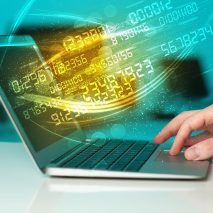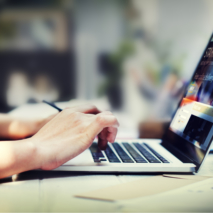I don’t know how accurate futurologists are nowadays (presumably nobody will for at least 30 years) but when it came to healthcare they used to be rubbish.
- Injectable nanobots that hunt down ‘flu?
- Handheld scanners that fuse bones back together?
- The rather Willy Wonka concept of a three-course-meal in a pill?
I’m not saying these won’t all happen one day. It’s just remarkable that, way back when, nobody managed to see the role that boring old data would have in today’s radical advancement of healthcare.
Here’s a rollcall of reasons why digital healthcare is a very exciting and innovative place to be right now, and what could be coming to you soon.
Thank the Internet for not having to go to the doctors when you’re sick
Travelling to see your doctor is tough when you’re ill, and doesn’t get all that much easier as you recuperate. But patients have important data to relay, and must do so in person.
Well they used to say that about making payments and transferring money, prior to the advent of online banking. As ultrafast fixed and mobile broadband connections have gotten more ubiquitous, it’s possible to conduct a doctor/patient consultation as if you were right there.
LOOK OUT FOR: Growing prevalence of telemedicine being offered by GPs and outpatient clinics in rural areas and among patients in greatest need. This centres around use of HD video conferencing to conduct examinations and consultations, reducing appointment cancellations and accelerating urgent cases. Telemedicine also enables communities in developing countries to access healthcare services at lower cost without the delay and trauma of traveling long distances where there is no transport infrastructure.
Connected ‘things’ are becoming as valuable as drugs
That’s not such a crazy claim when you think about it. Who knows how many more years of newly developed antibiotics we’ve got left, as pharmaceutical companies run out of ideas and the concept of preventative treatments and lifestyles replaces our exclusively pill-popping dependence? All the big fuss about the Internet of Things (IoT) is genuinely warranted when you apply it to medical diagnostics and monitoring devices.
That’s because the age-old process of collecting data ‘in person’ is dangerously inefficient, necessitating extended hospital stays and potentially life-threatening gaps between data collection episodes. For anyone who’s ever used a FitBit (or been bored to tears by someone who has) to keep track of sleep patterns and heart rate, it doesn’t take much to imagine the value that constant health monitoring has to a patient with a chronic medical condition.
LOOK OUT FOR: The normalisation of 24/7 health monitoring as a means of automating a huge proportion of the healthcare process for millions of patients. These will increasingly live as software applications on existing device platforms rather than necessarily requiring a separate piece of kit to carry around.
It’s quicker and easier to get more skilled medical input involved
Medical professionals are typically eager to learn and collaborate in order to offer new treatments, but there is only so much support doctors can get at a seminar or over the phone – especially during an emergency.
As technological barriers tumble down, doctors can spend their time more efficiently on cases where their specific skills are required. Similarly, where constant remote monitoring – such as with long-term patients – is employed, medical professionals can intervene at precisely the right time for them and their patient.
LOOK OUT FOR: More interdisciplinary working between virtual teams of medical professionals as the cost and disruption of collaboration continues to fall, and patient outcomes improve. Key to this is the ability of software to update a secure patient record in real-time, enabling important medical decisions to be made confidently without delay, by streamlining the crossovers between professionals and eliminating human error.
There’s a lot of goodwill to make cultural change happen
Any change – even positive change – can occasionally be met with resistance by operational managers and medical professionals alike. What’s encouraging about the development of e-health is the tangible crosscutting willingness to embrace new technology and the cultural change that goes with it.
It’s always been the case that patients hold vital data and doctors work hard to get it out of them for their own good. As digital healthcare unblocks these data flows, enormous potential benefits are produced, and with them significant challenges and knock-on effects that all stakeholders have a role in addressing together.
LOOK OUT FOR: Greater strategic emphasis from healthcare leaders to develop a vision for digital healthcare. Executing that vision means listening to the views and opinions of patients and medical professionals to design ‘consumer-like’ experiences, and extract value from complex, very large stores of sensitive data.
Whether its remote emergency diagnostics or long term social care; whether it’s lifestyle or treatment focused healthcare – many of the traditional systems involving patients and medical professionals are innovating towards optimum efficiency.
This is well understood at illumo digital, where we’ve amassed plenty of recent experience supporting the healthcare industry to improve the lives of patients by taking advantage of an increasingly hyperconnected world. Read our case study all about the award-winning MapMyHealth project that helps hundreds of thousands of diabetes sufferers in the UK to manage their condition.

